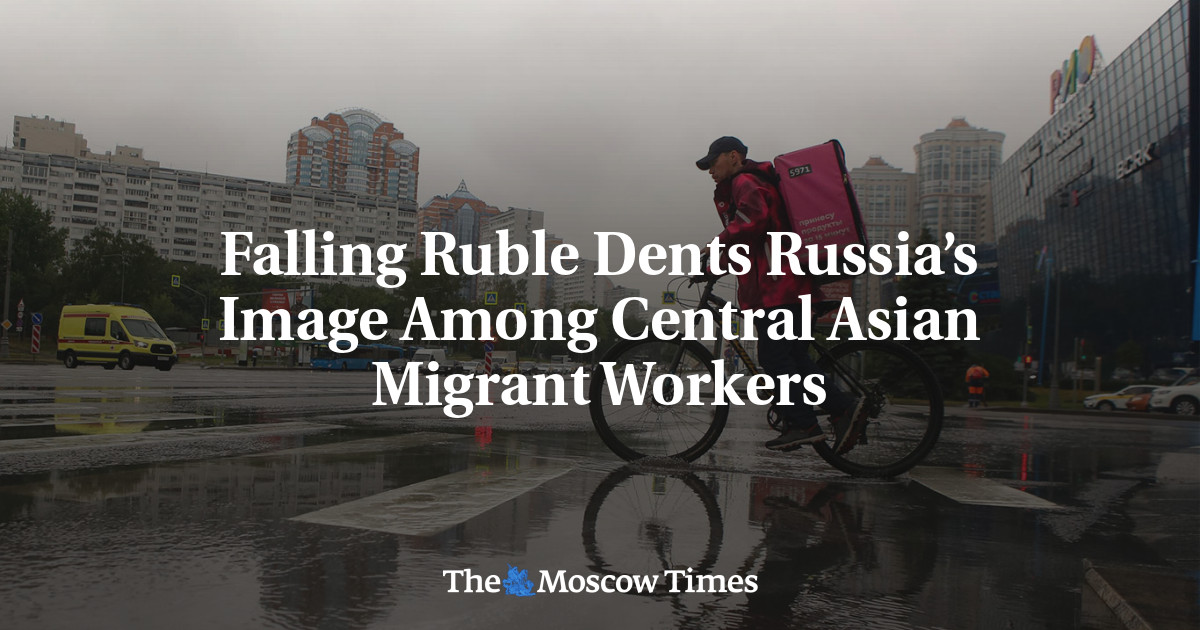### Summary
The Russian stock market's recent gains are a facade and the country's economy is in decline, according to Yale researchers. Russia's frozen foreign assets and the depreciation of the ruble have artificially inflated stock market profits. Additionally, the economy is suffering from a loss of confidence, with people and money fleeing to neighboring countries.
### Facts
- 📉 The Russian stock market's recent gains are an illusion, masking the true state of the country's struggling economy.
- 🧊 Russia has frozen inflows and outflows of foreign assets, preventing investors from cashing out and propping up the stock market.
- 💸 The depreciation of the ruble has artificially inflated the value of Russian stocks, as the country's commodities are sold in foreign currencies.
- 💼 Workers, academics, and oligarchs are leaving Russia, taking with them technical and intellectual capital essential to the country's economy.
- 💔 Trust in President Vladimir Putin and confidence in the Russian economy have eroded, leading to a lack of domestic and foreign investment.
- 🌍 Neighboring countries like Armenia, Georgia, and Kyrgyzstan have become destinations for Russian money and talent fleeing the country.
- 📉 Experts warn that Russia's economy could continue to decline and the country may even become a failed state if the costly war in Ukraine persists.
The Russian economy is facing several major issues, including a labor shortage, soaring inflation, a tumbling ruble, the risk of recession, a real estate bubble, and the nationalization of foreign businesses, which could lead to stagnation and a fall in GDP growth in the long term.
The Russian ruble's recent volatility and decline in value reveals the underlying struggle of funding the military without damaging the national currency or causing inflation, while the Kremlin's efforts to stabilize the economy in the short term may not prevent long-term economic decline and stress on the ruble.
Russia's Central Bank plans to increase support for the ruble by selling a larger volume of foreign currency each day, in response to an upcoming payment of foreign currency bonds and to reduce market volatility caused by Western sanctions.
The Central Bank of Russia has raised its key lending rate to 13% in an effort to combat inflation and stabilize the struggling ruble, which has weakened significantly against the dollar due to decreased exports and increased imports. The country also faces challenges with low unemployment and a brain drain of talent to other former Soviet states. However, the Russian government remains optimistic about economic growth forecasts for 2023.
The Russian rouble's decline is causing tensions between the central bank and finance ministry, as inflation rises and growth slows, threatening the country's ability to wage war effectively.
Russia's economy is being increasingly structured around war, with nearly one-third of the country's spending next year devoted to defense, redirecting funds from sectors like health care and education; however, the economic impacts of the war, including inflation and a weakened ruble, are causing concerns for citizens and the government alike.
Russia has reintroduced some capital controls in an effort to stabilize the ruble as the cost of war with Ukraine continues to impact the economy, with the currency gaining 3.4% after Moscow announced exporters would be forced to convert foreign revenues into rubles. These controls are similar to those implemented in 2022 after the start of the conflict, where Russia ordered exporters to swap 80% of their foreign currency revenues for rubles and banned residents from making bank transfers outside of Russia. The ruble has lost over a third of its value against the dollar this year due to the war and declining revenue from the energy industry.
